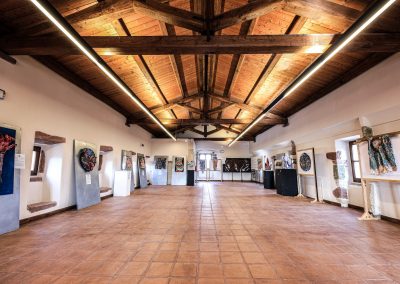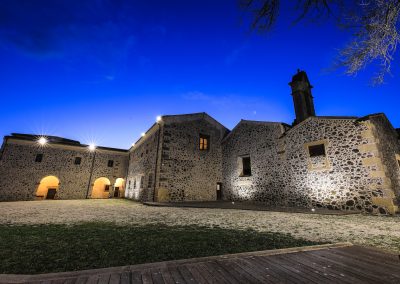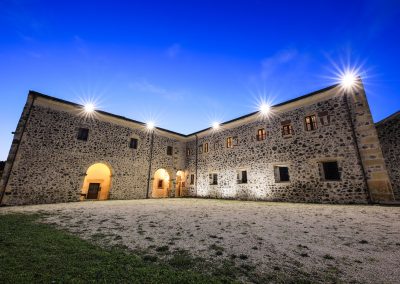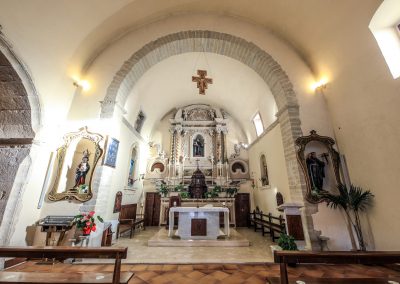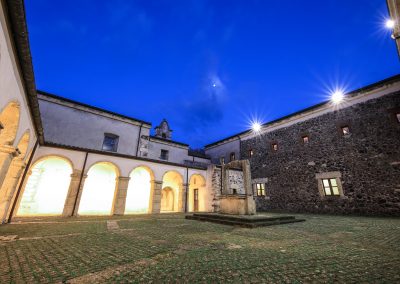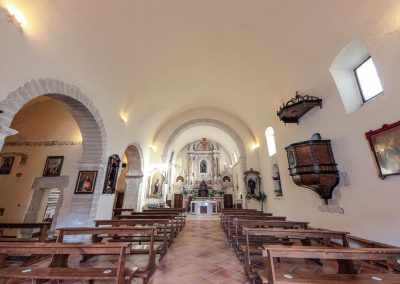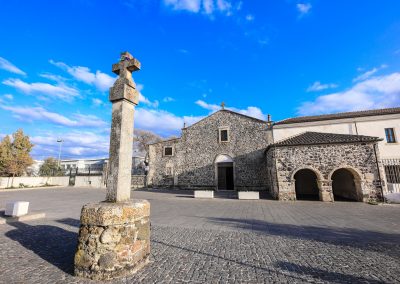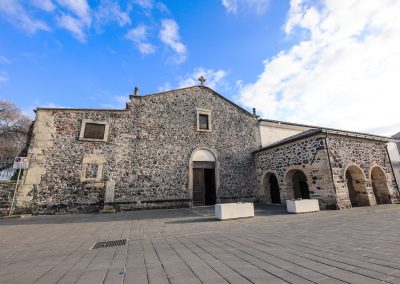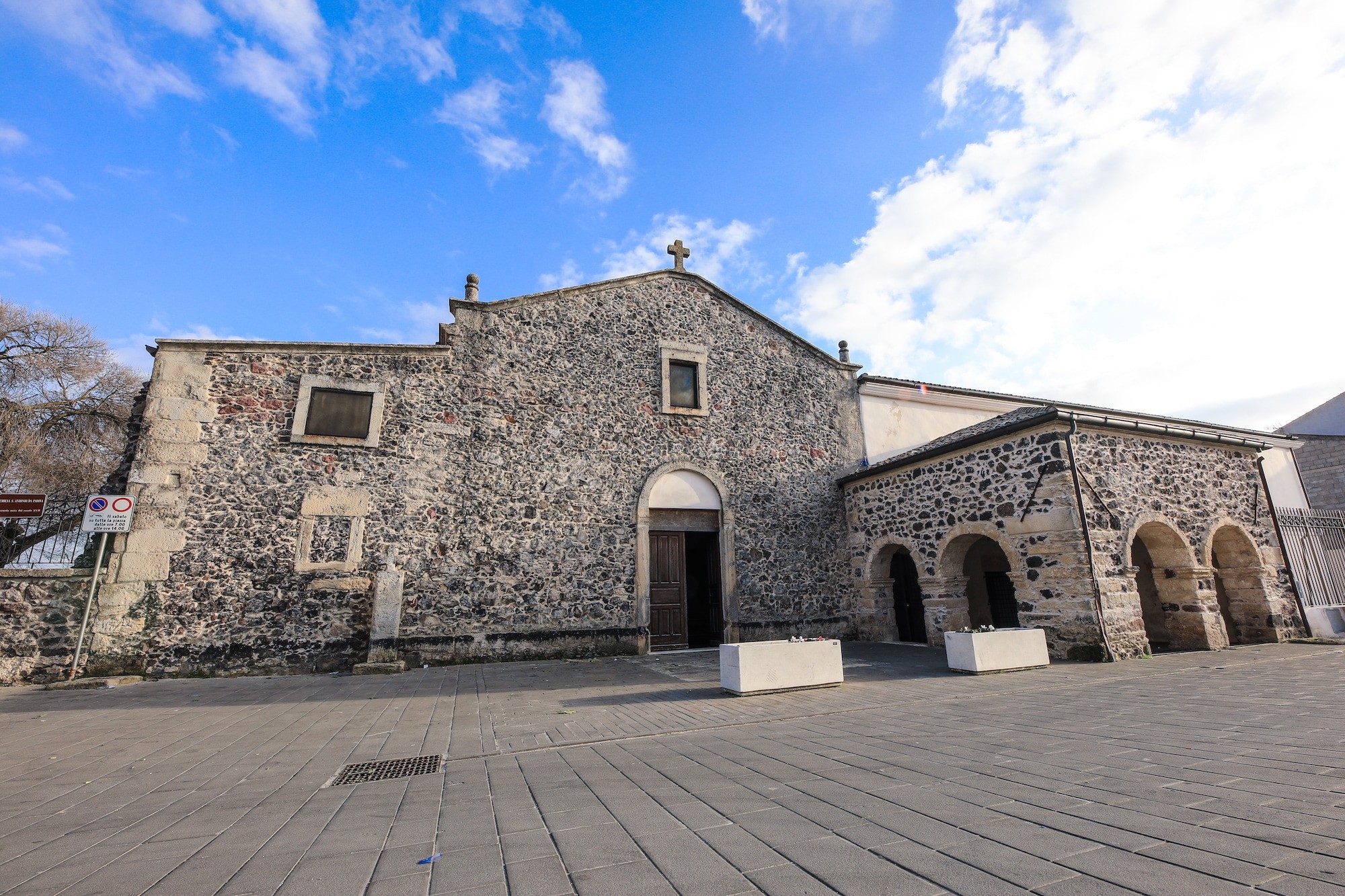
Ploaghe
Church and convent of Saint Anthony of Padua
The Church of Saint Anthony of Padua and its Convent overlook the “Piatta de cunventu” (tn* “Convent Square”, in Sardinian), with the valley of Saint Zachary behind. The building, with its beautiful portico, overlooks a wide square marked by a cross, according to the custom of the Capuchins. It was founded in 1651 by Father Nicolò Pischedda from Ploaghe, provincial definitor and guardian of the same convent (tn* a definitor is an official charged under canon law with the supervision of ecclesiastical property). The convent was opened at the same time as the church in 1659. The building was financed by numerous donations and bequests. It was closed in 1866 and added to state property, part of which was then donated to the Town Council and the rest to the Province to be used as military station for the Italian Carabinieri (tn* Italian military police). The Town Council assigned its rooms to a district prison, an elementary school for boys and then for civil and social purposes. Since 1987 it has entirely belonged to the Town Council. In these last two years and after restoration work, that hasn’t been very respectful of conservative regulations, it has been given back to the community. Now the big courtyard of the services is a dormitory, deprived of its chambers, where concerts, conventions and exhibitions take place. On the ground floor, in the fire filter rooms and in the workshops, there is now a library and its reading rooms. Exiting these rooms, there is a cloister with portico, fulcrum of the building and once the fulcrum of the friars’ communitarian lives. Here there is a picturesque well of 1689, a fountain on the wall and a small choir in the partition wall between the convent and the church. Despite the requisitioning of the building, the church has continued to officiate upon request of worshipers, also thanks to the local administrators who work hard to provide for its maintenance. The building has a single nave covered by a barrel vault. The choir can be accessed from the presbytery, and the ex convent from the choir. On the left there are three adjoining chapels, the under-sacristy, a rustic stone aquarium and the sacristy. What is left of the original furniture, typical of wooden artisan work of the Capuchins, is a tabernacle, the pulpit and the doors of the wardrobe in the presbytery. The choir in Neo-gothic style and the furniture in the sacristy date back to the second decade of the 1800s. In the same period, the main altar and the altars of Our Lady of Good Remedy and Saint Francis were restored as well, made of stucco in Late Baroque style. The façade is made of stone with irregular stones bound by mud, like most of the complex. The main entrance and the windows have frames and doorjambs in limestone. The cross over the façade is the only surviving one of the via crucis, Way of the Cross stations.
- Tomb of the Giants Fiorosu
- The Candelieri
- Church of Saint Peter
- Church of Saint Anthony of Salvennor
- Church and convent of Saint Anthony of Padua
- Church of Saint Michael of Salvennor
- Monumental cemetery
- Funtana Manna (tn* Big Fountain)
- The Oratory of the Rosary
- Church of Saint Matthew
- Nuragic Fountain of Frades Mareos

